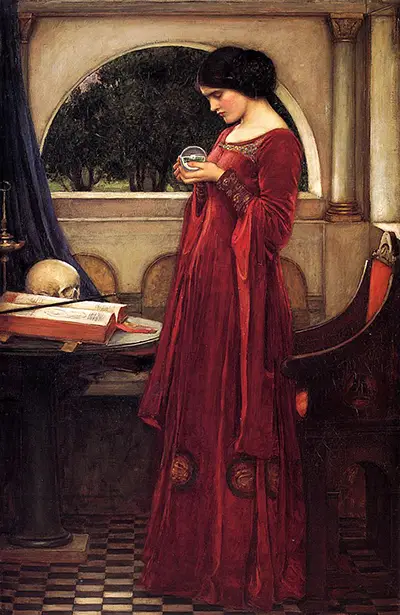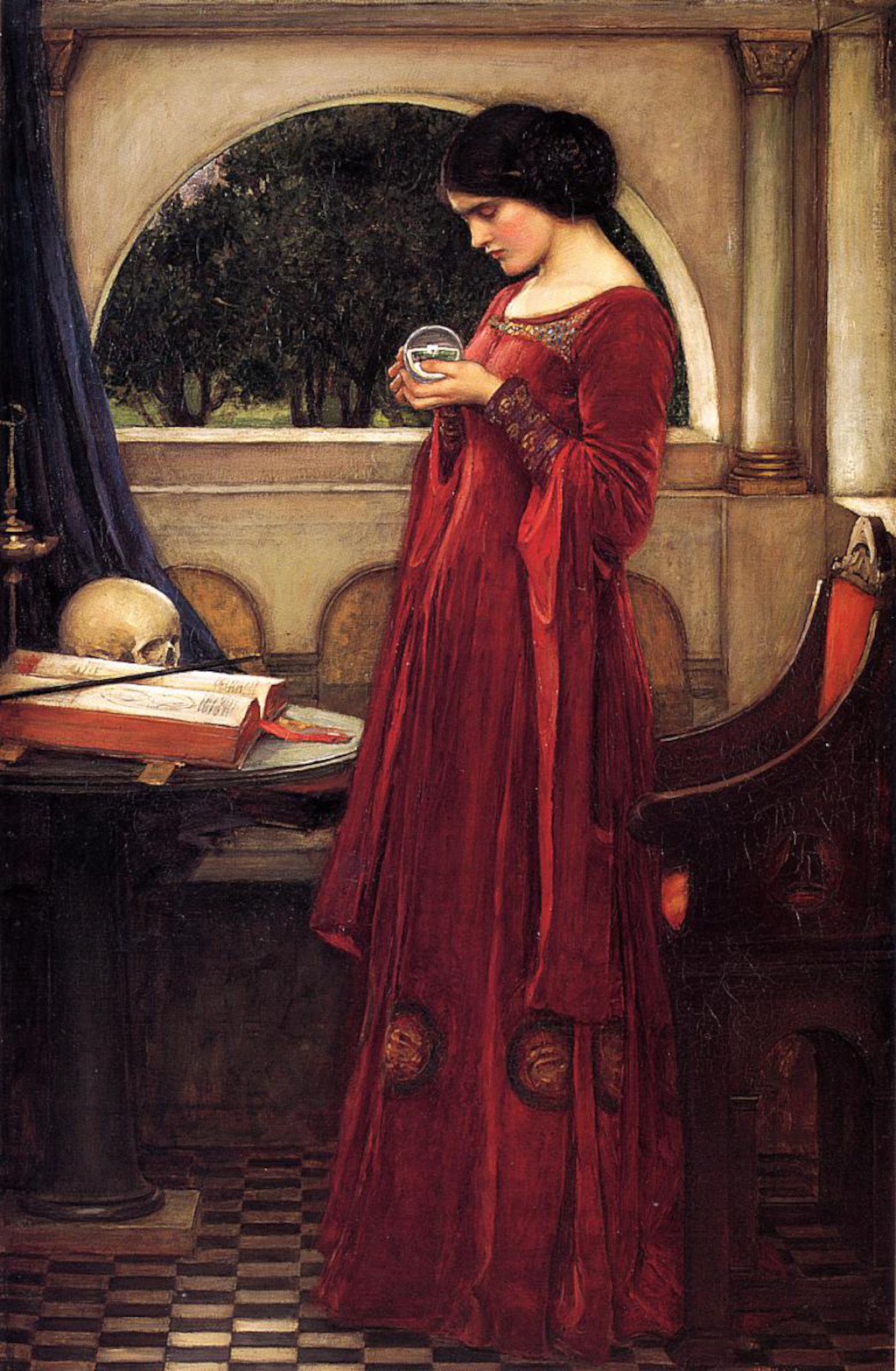Introduction
Waterhouse finished this painting in 1902 and immediately put it on display in the Royal Academy, as with most of his new work at this time. It sat alongside another of his works, titled The Missal. The Crystal Ball is consistent with the artist's style, which remained consistent over many decades.
Whilst he enjoyed considerable success during his distinguished career, Waterhouse's style was starting to fall out of fashion by the turn of the century and so his approach would not be continued by other British artists of the next generation. By now, Europe was starting to see exciting new ideas, including the use of abstraction and the evolution of Impressionism.
Description
The model peers into the ball, leaving the viewer to imagine what she might be seeing and thinking at that point. Her appearance suggests it is pure and gentle, though the skull that sits at the back of the scene offers a more sinister touch of symbolism. A previous owner had taken a dislike to this addition and actually painted over it, though a recent restoration has thankfully returned the painting back to its original composition.
It is the touches of architecture at the back of the room that give the painting an impression of the Renaissance, with a style differing from the Gothic approach that was found in many paintings at this time. The somewhat friendlier construction of vertical and horizontal lines of the Italian papal states of centuries before feels more suited to Waterhouse's artistic style.
The Artist's Consistent Style
Common elements found in this work that persist across the artist's career include the elegant dress which hangs from the slim brunette, with the model likely to have been used in several other portraits. It is also possible that Waterhouse may have re-positioned her several times before arriving upon this preferred stance.
He tended to produce study drawings first, whilst in the company of the model. He would then later start on his painting from his own studio, possibly on his own. This process worked well for the artist, and may have been introduced to him whilst studying as an art student. He followed a traditional, academic route within his artistic education.
Large Image of The Crystal Ball
Waterhouse liked to add aesthetic interest within his paintings, by placing all manner of different objects and details around each scene. His portrait models would always take centrestage, but he would take inspiration from the theme of each work to add other touches around them.
Note in the image below the touches of symbolism, with the skull on the desk, for example. There is also an open book alongside, both upon a classic wooden desk with matching chairs alongside. A blue curtain hangs down alongside some intricate interior design details. The tiled floor beneath the lady's feet is found many times within Waterhouse's work.
Additional items to note are the arrangement of trees showing through from the background, as well as the charming detail added to the female figure's dress, with embroidered patterns around her chest and sleeves. Her hair is dark brown and carefully arranged into a bun behind her head. This hairstyle was easier for the artist to control within the painting.


